The Sea Forts of Copenhagen (Island Week 5)
Monday, 27th September 2010 by Ian Brown
In the waters off the Danish capital, there are three artificial islands1 created as sea forts to protect Copenhagen harbour. Situated about 3km from shore is the largest of the three, Middelgrundsfortet, which is actually the world's largest sea fort.
Middelgrundsfortet was constructed in the late 19th century, with much of the materials coming from the excavations taking place to expand the nearby harbour. With an area of 70,000 sq m it also claims the slightly-technical world record for being the "largest artificial island without abutments"2.
The excellent high-res images give us a good look at the various fortifications and buildings around the island.
The Danish military maintained a presence here until 1984, and in 2002 it was sold to a private owner who now uses the island and its buildings as a hotel and conference centre. We can actually get a very distant glimpse of Middelgrundsfortet from Street View's visit to the outskirts of Copenhagen, and there's also a nearby wind farm of the same name that GSS visited back in 2005.
About 3km to the south-east is a second well-preserved sea fort - Flakfortet, which was built in between 1910 and 1915. Again we can see the various structures in great detail.
Flakfortet was also sold to a private owner, and is today open to visitors for weddings, concerts, and ... mini-golf?
The third, and oldest, artificial island is found right at the entrance to Copenhagen harbour - Trekroner Fort.
Named after one of three ships sunk here in the late 18th century to create a foundation for the island, Trekroner has protected the harbour through numerous conflicts, beginning with the Battle of Copenhagen in 1801. It was, however, occupied by German forces during the second world war. The island is now a tourist attraction, clearly visible3 from the harbour roads.
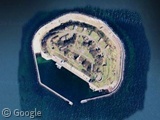
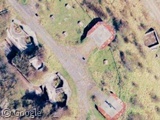
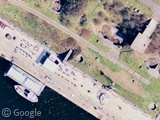
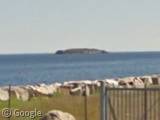
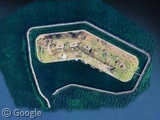
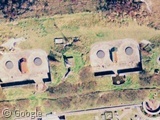
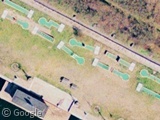
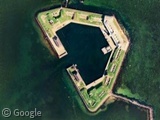
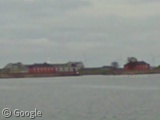
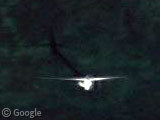
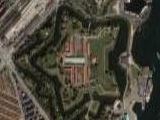
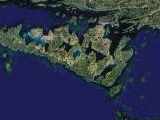
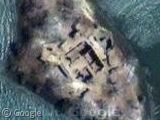
Trekroner only (ever) saw battle when Adminal Nelson attacked Copenhagen in 1801. At that time the fort was just a pile of mud in the water (more or less). 66 guns and 660 sailors/gunners was dumped on the “island” and told to hold the ground. (Which they did for 4 hours until the British navy retreated).
“Which they did for 4 hours until the British navy retreated.”
Interesting interpretation of the Battle of Copenhagen, Jan!
When I was a kid we sometimes went sailing to Flakfortet, at that time no longer operated by the Danish Navy. For us kids it was a wonderful maze of fortifications and tunnels.